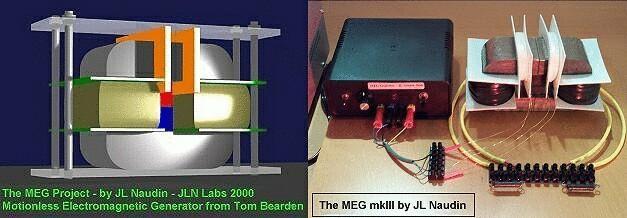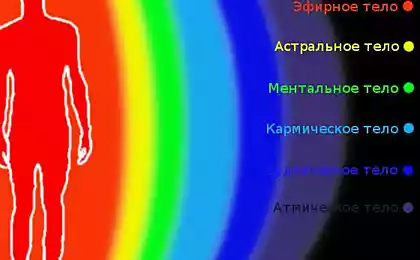295
Resonant method of extracting energy from a physical vacuum
Probably the most efficient of all the existing mechanisms that extract energy from a physical vacuum is the resonance mechanism. In it, both the direction of the velocity vector and the numerical value of the speed of movement are constantly changing. Any oscillation is characterized by a high degree of unevenness, and the more uneven, the highest the result will be.

According to some sources, it is known that the first researcher who developed resonance generators was physicist Henry Murray. Around the middle of the twenties of the last century, he conducted the first successful experience in obtaining energy from the vacuum in very large volumes. And already in the late twenties, Henry built a thirty-step unit, which had a power of 50 kW and worked for several months without interruption. Murray did not hide anything, openly showed everyone his unit. This caused him trouble - an unknown anonymous person brought a bomb to the laboratory and detonated it. A short time later, Murray himself died suddenly. And, since after his death, all the drawings for the installation of this mechanism disappeared, no one knows exactly how this device was designed.
The second generator, which worked on the resonance principle, was built by physicist Nikola Tesla. However, the lab in Colorado Springs, where he conducted the tests, was also blown up. Tesla was very famous and so he was kept alive, but the funding for any further development of the mechanism was cut off. The Tesla apparatus consisted of a spark and an electric generator connected to an electric motor. The generator rotated using the engine and produced the necessary current for it. Moreover, the current was produced in large quantities, which was enough for all external consumers. The reason for this current production was the presence of resonance in the circuit. If the spark skips between the electrodes in the spark, it begins to oscillate a wide range of frequencies, one of which necessarily coincides with the resonance value. When the load changes, the resonance will be produced at a different frequency.
The whole system is very convenient, it does not need a control unit, as it adjusts to the resonance mode automatically. But Tesla rejected this system, as the emitted spark is very harmful to health by its X-ray radiation.
Arseniy Medelyanovsky, Alexander Chernetsky, Vladilen Dokuchaev - contemporaries working with a spark scheme, it was because of harmful radiation that they died. Also, the spark produces radio waves so powerful that all radios and televisions fail. Because of these shortcomings, Tesla abandoned this scheme.
He developed a new, safer method using a standard oscillatory circuit, which is present in every radio receiver and contains at least one induction coil, as well as an electric capacitor of variable capacity.
Wide-spectrum electromagnetic waves come from constant thunderstorms and lightning on Earth. Capturing these waves, the antenna provokes a small alternating current in the circuit, which, thanks to the resonance mode, is amplified to such an extent that the motor existing there begins to work.
At the industrial exhibition in Dallas, Tesla enlisted the support of such firms as Pierce-Arrow and General Electric and installed an electric motor on the motor of the demonstrated car with a rotation speed of 1800 rpm and an AC power of 80 hp. Next, Tesla built from resistors, wires and several electronic lamps a small box measuring 60×30×15 cm with two antennas, installed it behind the seat, and connected it to an electric motor. Tesla drove the car for a week, developing speeds up to 150 kilometers per hour, and to all questions about the source of energy supply, he answered that it comes from the ether, i.e. physical vacuum. Enraged by the arguments of illiterate laymen who thought that Tesla had contacted the devil himself, he removed the box from the car and told how it worked, refused.
At the moment, some physicists working in this direction see the energy source of the Tesla box in electromagnetic fields. Of course, it will be possible to obtain energy from the magnetic field if the frequencies of the apparatus are set at the frequencies of the electromagnetic field of the Earth (“Schuman resonance” – from 7-7.5 hertz). In this case, it would contradict the words of Tesla, because he himself as no one understands magnetic fields, but the quality of the source always spoke of a physical vacuum.
At the moment, Don Martin in the United States, Paolo Korea in Canada and Andrei Melnichenko in Russia are working on such schemes. The Americans keep Don Martin’s installation schemes secret, but there is information that they are almost identical to Melnichenko’s schemes.
The Russian physicist himself began with a simple device with an ordinary electric motor, generator and capacitor. This is known from his interview in the magazine “Light” in 1997, which talks about how he worked with the circular in the country, the engine, which was designed for 1.5 kW.
Suddenly the power was cut off and he found a 127-volt gasoline generator, but the circular engine was designed for 220 volts, and from such a generator it worked so slowly that it could easily be stopped with the palm of your hand. Then Melnichenko put a pair of conventional capacitors in series with the engine. The voltage immediately increased to 500 volts, he removed the capacitor, and the voltage became just suitable for the engine. The petrol generator produced 100 volts and the electric motor 270, with the same current strength of 0.5 amps – the local electrician could not believe his eyes!
The engine voltage at the entrance is 2 times less, and at the exit is 20% more - he could not understand anything! Melnichenko disconnected a capacitor the size of a matchbox from the engine and explained the whole essence of the experiment to the electrician. Any specialist can reproduce and verify its additional power in a couple of seconds.
All energy ejected from the physical vacuum in this installation is given to the consumer during the transition to the neutral state, therefore, another energy source is required for the next excitation cycle. This source Melnichenko made a gasoline generator, and in the box Tesla source became distant lightning. Melnichenko noted that if part of the energy is allowed to be re-excited, then another source of energy is not needed, and decided to make changes to the installation.
The upgraded apparatus included an engine, a generator, as well as a variable capacity capacitor, load, batteries and a control unit. Electrically and mechanically connected through the coupling engine and generator. The capacitor was located in the load circuit, the circuit in the engine circuit was connected parallel to the generator. Batteries were needed only to start the installation, and the control unit adjusted the capacitor so that the resonance in the circuit was maintained constantly. After switching to standard mode, the batteries shut down.
And the appearance of the installation Paolo Korea is very similar to those of Murray, according to visitors to this laboratory who saw the installation. Korea in its installations uses acoustic resonance in plasma. Along the entire length inside the glass tube, two flat electrodes are stretched, they receive an alternating voltage, the frequency of which is equal to the resonance of acoustic vibrations in the plasma (Murray used 30 glass tubes consistently installed in the battery).
A substance that coats the inside of the electrodes with a thin layer is the ionization of the gas with which the plasma itself is created. In his articles, Korea reports that he receives 6-18 units of energy from plasma, these figures are very low, but they are enough to get the desired result.
But the installation of the Canadian, unfortunately, is unstable, the voltage generated jumps, the reason is the positive feedback between the contribution and the energy output. All this leads to overvoltage of all equipment, and it can fail. The researcher has not yet found a solution to this problem.
The most interesting thing was that all power plants have long used such equipment, because the phenomenon in the electrical resonance network is known to all electromechanics, but they have completely different goals. When the phenomenon of resonance occurs, there is an energy release that can exceed the norm by 10 times, and most consumers burn out. After that, the inductance of the network changes and then the resonance disappears, but after all, the burned-out devices cannot be restored. To avoid these inconveniences, certain anti-resonant inserts are installed that automatically change their capacity and withdraw the network from the danger zone as soon as it is close to resonant conditions. If the resonance was maintained in the network specifically, with a corresponding weakening of the current at the exit from the station, fuel consumption would be reduced by several dozen times. The cost of energy produced would be much lower.
There is information that the resonance could achieve a significant reduction in energy costs when water breaks down into hydrogen and oxygen. Producing electrolysis with a current with a frequency that is equal to the frequency of vibrations of hydrogen and oxygen atoms in the water molecule, the cost of decomposition will be minimal.
At this cost, we could get huge amounts of heat from batteries or sockets, decomposing the newly obtained water by resonance and re-burning the resulting gases. But so far, detailed information on this topic is not enough, and it is not possible to give any specifics.
First published - energoinform.org
Source: zeleneet.com

According to some sources, it is known that the first researcher who developed resonance generators was physicist Henry Murray. Around the middle of the twenties of the last century, he conducted the first successful experience in obtaining energy from the vacuum in very large volumes. And already in the late twenties, Henry built a thirty-step unit, which had a power of 50 kW and worked for several months without interruption. Murray did not hide anything, openly showed everyone his unit. This caused him trouble - an unknown anonymous person brought a bomb to the laboratory and detonated it. A short time later, Murray himself died suddenly. And, since after his death, all the drawings for the installation of this mechanism disappeared, no one knows exactly how this device was designed.
The second generator, which worked on the resonance principle, was built by physicist Nikola Tesla. However, the lab in Colorado Springs, where he conducted the tests, was also blown up. Tesla was very famous and so he was kept alive, but the funding for any further development of the mechanism was cut off. The Tesla apparatus consisted of a spark and an electric generator connected to an electric motor. The generator rotated using the engine and produced the necessary current for it. Moreover, the current was produced in large quantities, which was enough for all external consumers. The reason for this current production was the presence of resonance in the circuit. If the spark skips between the electrodes in the spark, it begins to oscillate a wide range of frequencies, one of which necessarily coincides with the resonance value. When the load changes, the resonance will be produced at a different frequency.
The whole system is very convenient, it does not need a control unit, as it adjusts to the resonance mode automatically. But Tesla rejected this system, as the emitted spark is very harmful to health by its X-ray radiation.
Arseniy Medelyanovsky, Alexander Chernetsky, Vladilen Dokuchaev - contemporaries working with a spark scheme, it was because of harmful radiation that they died. Also, the spark produces radio waves so powerful that all radios and televisions fail. Because of these shortcomings, Tesla abandoned this scheme.
He developed a new, safer method using a standard oscillatory circuit, which is present in every radio receiver and contains at least one induction coil, as well as an electric capacitor of variable capacity.
Wide-spectrum electromagnetic waves come from constant thunderstorms and lightning on Earth. Capturing these waves, the antenna provokes a small alternating current in the circuit, which, thanks to the resonance mode, is amplified to such an extent that the motor existing there begins to work.
At the industrial exhibition in Dallas, Tesla enlisted the support of such firms as Pierce-Arrow and General Electric and installed an electric motor on the motor of the demonstrated car with a rotation speed of 1800 rpm and an AC power of 80 hp. Next, Tesla built from resistors, wires and several electronic lamps a small box measuring 60×30×15 cm with two antennas, installed it behind the seat, and connected it to an electric motor. Tesla drove the car for a week, developing speeds up to 150 kilometers per hour, and to all questions about the source of energy supply, he answered that it comes from the ether, i.e. physical vacuum. Enraged by the arguments of illiterate laymen who thought that Tesla had contacted the devil himself, he removed the box from the car and told how it worked, refused.
At the moment, some physicists working in this direction see the energy source of the Tesla box in electromagnetic fields. Of course, it will be possible to obtain energy from the magnetic field if the frequencies of the apparatus are set at the frequencies of the electromagnetic field of the Earth (“Schuman resonance” – from 7-7.5 hertz). In this case, it would contradict the words of Tesla, because he himself as no one understands magnetic fields, but the quality of the source always spoke of a physical vacuum.
At the moment, Don Martin in the United States, Paolo Korea in Canada and Andrei Melnichenko in Russia are working on such schemes. The Americans keep Don Martin’s installation schemes secret, but there is information that they are almost identical to Melnichenko’s schemes.
The Russian physicist himself began with a simple device with an ordinary electric motor, generator and capacitor. This is known from his interview in the magazine “Light” in 1997, which talks about how he worked with the circular in the country, the engine, which was designed for 1.5 kW.
Suddenly the power was cut off and he found a 127-volt gasoline generator, but the circular engine was designed for 220 volts, and from such a generator it worked so slowly that it could easily be stopped with the palm of your hand. Then Melnichenko put a pair of conventional capacitors in series with the engine. The voltage immediately increased to 500 volts, he removed the capacitor, and the voltage became just suitable for the engine. The petrol generator produced 100 volts and the electric motor 270, with the same current strength of 0.5 amps – the local electrician could not believe his eyes!
The engine voltage at the entrance is 2 times less, and at the exit is 20% more - he could not understand anything! Melnichenko disconnected a capacitor the size of a matchbox from the engine and explained the whole essence of the experiment to the electrician. Any specialist can reproduce and verify its additional power in a couple of seconds.
All energy ejected from the physical vacuum in this installation is given to the consumer during the transition to the neutral state, therefore, another energy source is required for the next excitation cycle. This source Melnichenko made a gasoline generator, and in the box Tesla source became distant lightning. Melnichenko noted that if part of the energy is allowed to be re-excited, then another source of energy is not needed, and decided to make changes to the installation.
The upgraded apparatus included an engine, a generator, as well as a variable capacity capacitor, load, batteries and a control unit. Electrically and mechanically connected through the coupling engine and generator. The capacitor was located in the load circuit, the circuit in the engine circuit was connected parallel to the generator. Batteries were needed only to start the installation, and the control unit adjusted the capacitor so that the resonance in the circuit was maintained constantly. After switching to standard mode, the batteries shut down.
And the appearance of the installation Paolo Korea is very similar to those of Murray, according to visitors to this laboratory who saw the installation. Korea in its installations uses acoustic resonance in plasma. Along the entire length inside the glass tube, two flat electrodes are stretched, they receive an alternating voltage, the frequency of which is equal to the resonance of acoustic vibrations in the plasma (Murray used 30 glass tubes consistently installed in the battery).
A substance that coats the inside of the electrodes with a thin layer is the ionization of the gas with which the plasma itself is created. In his articles, Korea reports that he receives 6-18 units of energy from plasma, these figures are very low, but they are enough to get the desired result.
But the installation of the Canadian, unfortunately, is unstable, the voltage generated jumps, the reason is the positive feedback between the contribution and the energy output. All this leads to overvoltage of all equipment, and it can fail. The researcher has not yet found a solution to this problem.
The most interesting thing was that all power plants have long used such equipment, because the phenomenon in the electrical resonance network is known to all electromechanics, but they have completely different goals. When the phenomenon of resonance occurs, there is an energy release that can exceed the norm by 10 times, and most consumers burn out. After that, the inductance of the network changes and then the resonance disappears, but after all, the burned-out devices cannot be restored. To avoid these inconveniences, certain anti-resonant inserts are installed that automatically change their capacity and withdraw the network from the danger zone as soon as it is close to resonant conditions. If the resonance was maintained in the network specifically, with a corresponding weakening of the current at the exit from the station, fuel consumption would be reduced by several dozen times. The cost of energy produced would be much lower.
There is information that the resonance could achieve a significant reduction in energy costs when water breaks down into hydrogen and oxygen. Producing electrolysis with a current with a frequency that is equal to the frequency of vibrations of hydrogen and oxygen atoms in the water molecule, the cost of decomposition will be minimal.
At this cost, we could get huge amounts of heat from batteries or sockets, decomposing the newly obtained water by resonance and re-burning the resulting gases. But so far, detailed information on this topic is not enough, and it is not possible to give any specifics.
First published - energoinform.org
Source: zeleneet.com
Forest House on the outskirts of Berlin
Audi will present spring polymer reinforced with fibre glass























